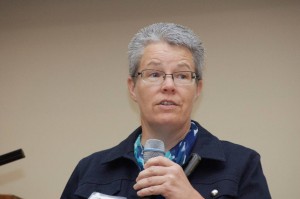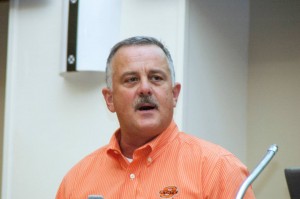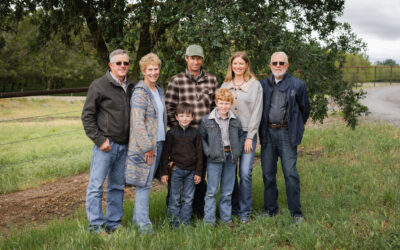
Reproduction matters, Part I
A few weeks ago I attended the two-day Applied Reproductive Strategies in Beef Cattle (ARSBC) Symposium, held this year at Oklahoma State University. I’ve been to ARSBC before and always find the combination of research and real-world application on the ranch valuable.
Here are some of the 2014 highlights:
- Fertility is a lowly heritable trait, but largely impacted by management. George Perry, South Dakota State University, says synchronization increases the uniformity and profitability of a calf crop due to added age (and thus weight) of artificial insemination (AI) calves. The genetic gain from proven AI sires is another bonus.
- AI doesn’t have to be complicated. Sandy Johnson, Kansas State University, shared the Beef Center Estrous Synchronization Planner (ESP). The free, downloadable Excel-based planner provides step-by-step guides to simplify protocols and schedules. It also estimates costs per pregnancy. You can even get it on your smart phone or tablet here.
- Match your herd and environment. “Seventy percent of energy to produce 1 pound of beef comes from cow maintenance,” said Dave Lalman, Oklahoma State University. He pointed to tools like the American Angus Association’s Optimum Milk Module.
- To heat up reproduction rates, cool it. Peter Hansen, University of Florida, spoke on measuring heat stress in cattle, as the long-term implications carry throughout the reproductive cycles. The normal rectal temperature range for beef cows is 101.3 F to 101.5 F. Conception rates can decline when temperatures reach 102.2 F, with an afternoon reading of 102.5 F. being “critical.” He encouraged the use of an iButton (inserted in a CIDR) for proper temperature monitoring.
Synchronization pays. Cattlemen Roger Wann talked about his use of synchronization and fixed-time AI on his ranch in southeastern Oklahoma. “We can’t improve genetics if we can’t get cows pregnant,” Roger said. “Synchronization is the delivery method for genetic improvement.” It adds up to a $120 return per female exposed to estrous synchronization and timed AI compared to natural service—and that’s not including genetic gain.
- To easily calculate the benefits, just Cowculate. Use the AI Cowculator, that is. Cliff Lamb, University of Florida, introduced the smartphone app that helps producers determine costs and value of estrous synchronization.
Lamb re-emphasized what seemed to be a theme all day: using reproductive technology is not as difficult as it sounds – and it pays.
“Calves born earlier in the calving season stay longer in the herd and are more productive in their lifetime,” he said.

For complete coverage of the conference, including PowerPoint presentations and audio, click here.
You may also like
Legacy in the Golden Land
On a quiet stretch of Northern California rangeland, a different story unfolds. The Borror family’s legacy modestly speaks through the cattle they raise, the ground they steward. The generations who’ve made a life here demonstrate commitment to doing things right, even when no one is watching.
Purpose Follows Passion
A chance opportunity. A change in career direction. And meat science was changed forever. Dr. Gary Smith originally had no plans to become a meat scientist. But thank goodness he did.
Marbling, Feet and Fertility: Are they related?
The Angus breed has enough genetic diversity to allow breeders, and their commercial bull customers, to make progress across multiple traits simultaneously. One bloodline may be high in marbling but does not check the boxes you need for other traits. That does not mean marbling is the cause—it simply means your search for the ideal genetic pairing is not done.


 Synchronization pays. Cattlemen Roger Wann talked about his use of synchronization and fixed-time AI on his ranch in southeastern Oklahoma. “We can’t improve genetics if we can’t get cows pregnant,” Roger said. “Synchronization is the delivery method for genetic improvement.” It adds up to a $120 return per female exposed to estrous synchronization and timed AI compared to natural service—and that’s not including genetic gain.
Synchronization pays. Cattlemen Roger Wann talked about his use of synchronization and fixed-time AI on his ranch in southeastern Oklahoma. “We can’t improve genetics if we can’t get cows pregnant,” Roger said. “Synchronization is the delivery method for genetic improvement.” It adds up to a $120 return per female exposed to estrous synchronization and timed AI compared to natural service—and that’s not including genetic gain.

